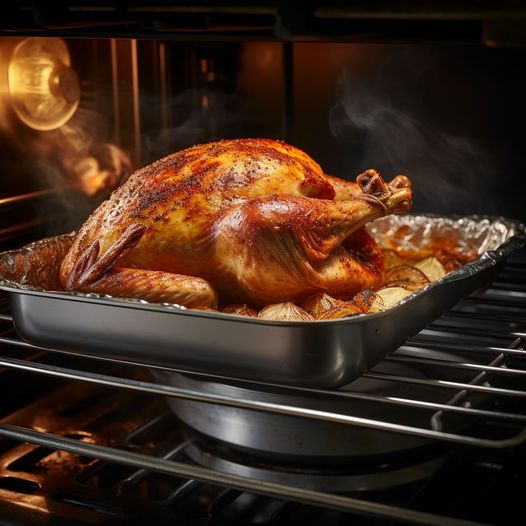ADVERTISEMENT
Should You Add Water to the Turkey Pan While It’s Roasting?
Roasting a turkey is a time-honored tradition in many households, especially during the holiday season. The process can seem a bit intimidating if you’re new to it, but with the right techniques, you can achieve a perfectly cooked, juicy turkey with golden, crispy skin. One common question that often arises when preparing a turkey is whether or not you should add water to the pan while it’s roasting.
While there’s no one-size-fits-all answer, the decision to add water—or not—depends on your goals for roasting, how you want the turkey to cook, and what kind of roasting pan you’re using. In this article, we’ll explore the pros and cons of adding water to the turkey roasting pan and give you some helpful tips to ensure your turkey turns out delicious every time.
The Traditional Debate: To Add Water or Not?
Adding water to the turkey roasting pan is a practice that many people have used for years. The theory is that water will help create steam, which in turn helps to keep the turkey moist during the long roasting process. However, modern cooking methods and techniques have raised some questions about whether this is truly necessary. Let’s break it down:
Why Some People Add Water to the Pan:
- Moisture Retention: The primary reason people add water to the turkey pan is to prevent the turkey from drying out. By adding water, you create a more humid environment in the oven, which some believe helps the turkey stay moist, especially the breast meat, which can dry out easily.
- Basting: Some cooks believe that having liquid in the pan allows them to baste the turkey more effectively. As the turkey roasts, the fat and juices drip into the water, creating a base for basting. This is thought to keep the skin from becoming too dry while it roasts.
- Gravy Base: Adding water can help make a flavorful base for gravy. As the turkey cooks, the drippings mix with the water, creating a stock-like base that can be used for making a rich, savory gravy.
Why You Might Skip the Water:
- Crispier Skin: The most significant downside of adding water to the pan is that it can inhibit the development of a crisp, golden skin. The steam created by the water makes it more difficult for the skin to dry out and brown properly. If you’re aiming for a crispy turkey skin, it’s best to avoid adding water and focus on high, dry heat.
- Roasting Method: Roasting a turkey at high heat (without water) encourages the Maillard reaction, a chemical process that helps develop rich flavor and brown color. When there’s water in the pan, the oven temperature is somewhat lowered, and the process of browning is hindered.
- Self-Basting: Many modern turkeys are sold with a self-basting feature, where the bird has been injected with a mixture of butter or oil, which helps keep it moist during roasting. If you have one of these, adding water to the pan is unnecessary.
- Alternative Techniques: Some cooks prefer using a roasting rack, which elevates the turkey above the pan, allowing air to circulate around the bird and promoting even cooking. This method doesn’t require adding water to the pan and still results in a juicy bird with crispy skin.
For Complete Cooking STEPS Please Head On Over To Next Page Or Open button (>) and don’t forget to SHARE with your Facebook friends
ADVERTISEMENT
